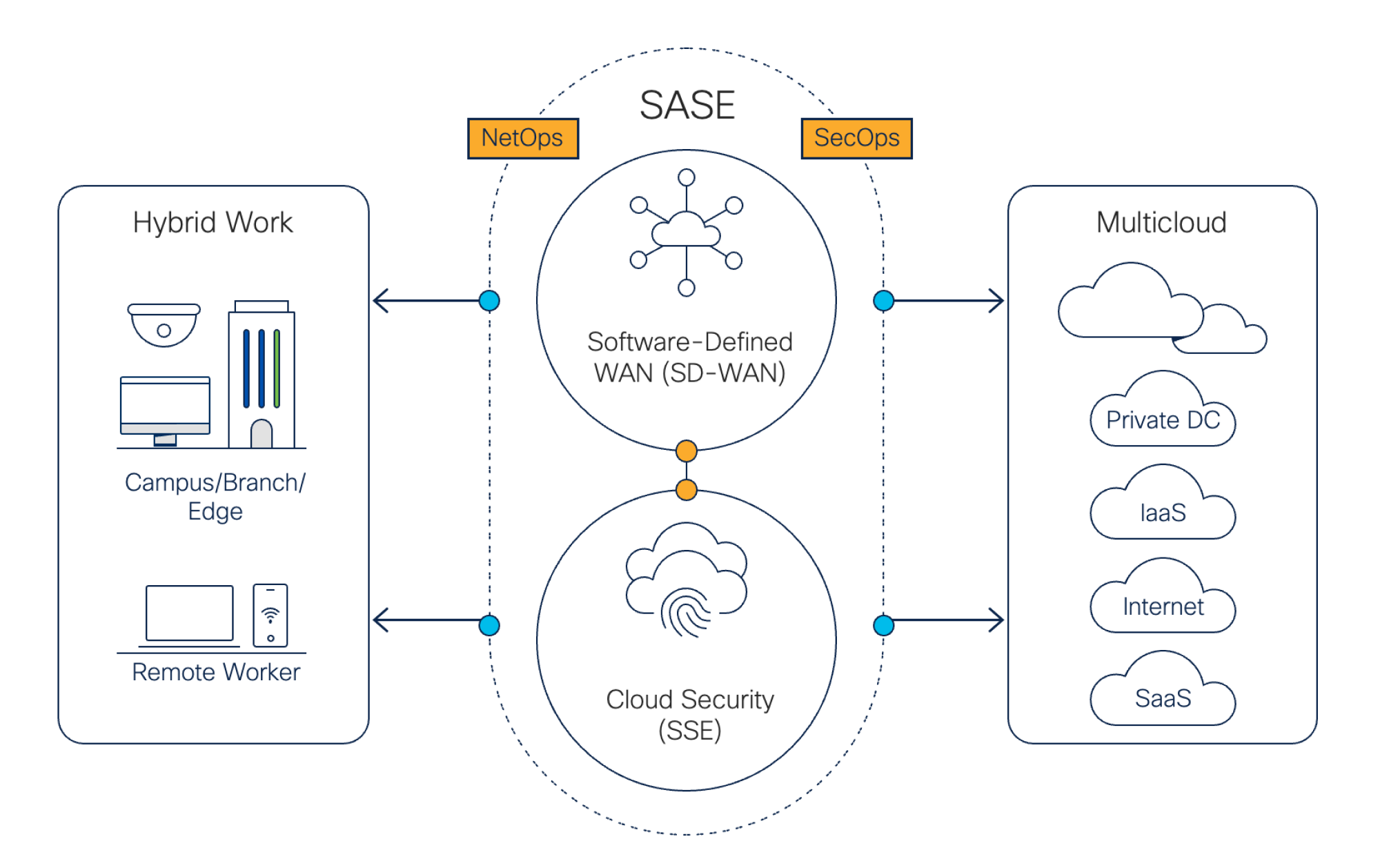- I recommend the Pixel 9 to most people looking to upgrade - especially while it's $250 off
- Google's viral research assistant just got its own app - here's how it can help you
- Sony will give you a free 55-inch 4K TV right now - but this is the last day to qualify
- I've used virtually every Linux distro, but this one has a fresh perspective
- The 7 gadgets I never travel without (and why they make such a big difference)
Come Together Right Now, IT Operations Teams

Part 6 of the six-part series – The 2023 Global Networking Trends Report series
If you have been reading our blog series around the 2023 Global Networking Trends Report, you may have noticed two recurring themes. First, network infrastructure has become more complex, and second, this complexity is calling for a change in the way we operate. We have changed where we run everything, we have changed the locations of the end users, and we have moved to a flexible model that adapts to changing needs.
For one thing, most organizations have more than one cloud. The 2023 Global Networking Trends Report shows that 92% of respondents reported using more than one public cloud, and 69% stated they are using more than five software-as-a-service (SaaS) applications. That does not mean they are using SaaS exclusively, of course; the architecture varies from traditionally developed, on-premises software (you can call it “legacy” or “heritage”) to third-party microservices and full-blown commercial SaaS offerings. The choices of systems are bound to fixed hardware and operating system stacks or abstracted into granular containers and services.
Most organizations still support the older, static technology models, and at the same time have to adapt to newer technologies such as virtualization, microservices, Kubernetes, and heavier API use—which each come with different network support requirements. The “long tail” of old versus new presents a greater challenge to IT operations and security.
Avoid “cylinders of excellence”
Back when I was a system administrator, I would have been considered part of a “full stack” team. We were responsible for setting up and troubleshooting everything—from pulling cables and carrying (heavy) 20-inch CRT monitors to diagnosing application issues together with the developers. But that technology model fragmented over the decades into layer-based areas of specialization (see Figure 1).
If you needed support, you had to pull in people from different domains, like the network engineer, the desktop support tech, the security experts, the Exchange admin, the database wizard, the business-embedded software engineer, and possibly a third-party vendor or two. We still see that problem today with IT operations forming silos. Silos such as cloud, network, and security operations were cited by 40% of our 2023 Global Networking Trends respondents as a top challenge to providing secure access from distributed locations to multiple cloud-based applications. And while some organizations have tried to unite these teams by forming “centers of excellence,” my experience is that with each team having its own agenda, these teams tend to turn into “cylinders of excellence”—further segmenting IT operations, while slowing down IT teams and the business.
Move swiftly and carry a small stick
None of the networking architectural options of the past few years are static. Just because many users went home during the pandemic doesn’t mean they’ll stay there long term. One call for an onsite, all-hands meeting will bring the networking load and access requirements back into the building for a few hours or even a few days. IT operations teams need to plan for a dynamic environment that hides each transition from the user. Implementing a zero-trust framework can help with this, since one of the principles of zero trust is that every access request should be subject to the same authentication and authorization process, no matter the location. How you do it, and in what order, is key to your success (see the blog on our Security Outcomes Report on Zero Trust for more details).
Given the dynamic nature of networking requirements, the IT operations and security teams need to converge—providing more alignment in their tools, processes, and people. This requires understanding how they can work better together to simplify IT and focus on end-to-end use cases. Cloud networking requirements are different from those in the data center. A security executive at a global bank once described to me how they made sure all the networking engineers received cloud training. Not only did that help with operational alignment, but it also opened up more career opportunities for the staff and empowered them to contribute support in more areas.
Another example in simplifying IT is to consider a secure access service edge (SASE) architecture to standardize enforcement, reduce complexity, and stay flexible in the face of a dynamic environment (as shown in Figure 2).

The days of siloed IT operations are over. All IT teams need a seat at the operations table as well as a unified agenda, including IT operations, networking, cloud services, and security professionals. End users should also have a seat at the table to add their business-side experience and desired outcomes to networking solutions.
As you go on your journey to consolidate and simplify your infrastructure, take this opportunity to bring all your IT operations teams together, along with users, so that the knowledge, skills, and processes in your network environment evolve as well. Try to avoid building another “cylinder of excellence” that is dedicated solely to cloud-based technology. While this may look like “plumbing” that doesn’t concern the business side, it is deeply user-facing in terms of performance and experience, and you may well discover important use cases when you include the end-to-end view.
The important message here is that people and processes are every bit as important as technology choices; IT operations should never operate in silos again.
Register to watch the Global Networking Trends on-demand webinar
and download the 2023 Global Networking Trends Report
Share:

